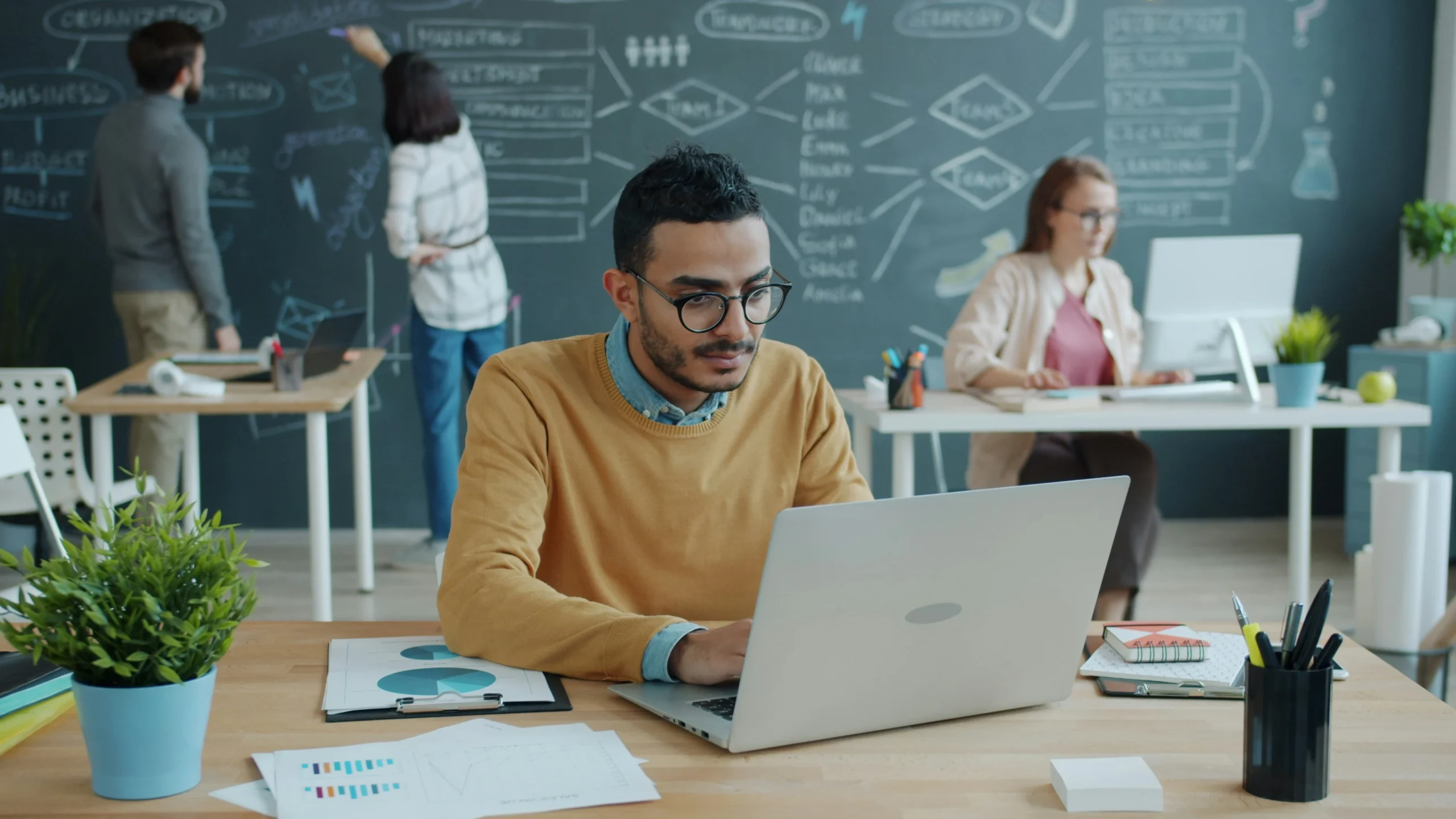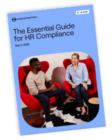Sick leave entitlements in the UK explained
We unpack everything about statutory sick pay in the UK and how you can best support your employees on sick leave.

When was the last time you checked in on your team?
With ongoing economic pressures, rising living costs and increasing mental health challenges affecting workers nationwide, many employees find it harder to take the time off they need. According to the latest data from the Office for National Statistics (ONS), the sickness absence rate in the UK was 2.0% in 2024, with an estimated 148.9 million working days lost due to sickness or injury.
These figures, published in the ONS’s Sickness Absence in the Labour Market report, highlight how important it is for businesses to understand sick leave entitlements and manage them effectively to support their teams.
Let’s break down everything you need to know about paid statutory sick pay (SSP), how it works and what you can do to support your employees during sick leave.
What is Statutory Sick Pay (SSP)?
Statutory Sick Pay (SSP) is the legal minimum amount that employers in the UK must pay eligible employees when they are off work due to illness. It’s set out in law under the Employment Rights Act 1996 and ensures workers get financial support if they can’t work because of sickness.
It’s important to note that SSP is different from occupational sick pay. Occupational sick pay refers to any enhanced sick pay schemes your company might offer in addition to the statutory minimum. These schemes can be more generous but must never fall below SSP.
Who is entitled to SSP in the UK?
Not every worker qualifies for SSP, and understanding the eligibility criteria is important for employers and employees alike. The requirements might seem straightforward, but there are some important nuances that need to be considered.
To be eligible for SSP, employees must meet several specific criteria that work together to determine their entitlement. First, they must be classed as an employee rather than self-employed (e.g. contractors or freelancers). Some workers (e.g. zero-hours or casual workers) may be eligible to receive SSP depending on whether they meet the eligibility criteria.
Second, the employee must have been off sick for at least 4 consecutive days, which includes weekends and non-working days. So if someone falls ill on a Thursday and doesn’t return until the following Tuesday, this counts as 6 consecutive days.
Third, they need to earn an average of at least £125 per week before tax and National Insurance, which is calculated over an 8-week period before the sickness begins. This means that even workers with variable hours or seasonal employment might qualify if their average earnings meet this threshold.
Finally, employees must notify their employer about their sickness according to company procedures or, if there are no specific company rules, as soon as reasonably practicable. If your employee meets all these criteria, they’re entitled to SSP for their period of sickness, starting from the fourth day of absence.
These requirements apply to each separate period of sickness, so an employee who recovers and returns to work before becoming ill again would need to meet the criteria afresh.. For official government guidance, you can head over to Gov.uk.
How much is statutory sick pay per day or week?
For the 2025/26 tax year, the weekly SSP rate is £118.75. This amount is taxable and subject to National Insurance contributions.
SSP is paid for up to 28 weeks for each qualifying period of sickness. The first three days of absence, known as ‘waiting days’, are generally unpaid, unless they link to a previous sickness absence within 8 weeks (known as a linked period).
Because not everyone works the same pattern, SSP can be calculated on a daily basis depending on the employee’s usual working days. Here’s a simple breakdown:
|
Working Pattern |
Weekly SSP Rate |
Daily SSP Rate (5-day week) |
Daily SSP Rate (7-day week) |
|---|---|---|---|
|
Full-time (5 days) |
£118.75 |
£23.75 |
£16.96 |
|
Part-time (3 days) |
£118.75 |
£23.35 |
£16.68 |
For example, if an employee usually works 5 days a week, they would receive £23.75 per day of sick leave. This helps ensure fair payment regardless of part-time or flexible schedules.
Fit notes, self-certification and proof of illness
When an employee is sick, the rules around proof of illness change depending on how long they’re off work:
- For the first 7 days (including non-working days), employees can self-certify their absence, meaning they just need to inform you they’re unwell. No medical certificate is needed.
- From day 8 onwards, a fit note, also known as a sick note, from a GP or hospital becomes necessary. This note confirms their fitness to work or suggests adjustments.
Employers can ask for reasonable medical evidence, but cannot demand excessive proof beyond these fit notes. Examples include:
- A doctor’s fit note
- Hospital discharge letters
- Medical certificates from qualified healthcare professionals
What employers need to know about sick leave and SSP
As an employer, you have important legal responsibilities when managing sick leave and SSP payments:
- You must pay SSP correctly to eligible employees and maintain accurate payroll records.
- Keep track of long-term sickness cases, including exploring options for reasonable adjustments or phased returns to work, especially if the illness is linked to a disability.
- It’s vital to keep records of sickness absences and SSP payments for at least 3 years, as required by law.
- Make sure employees are aware of the company’s sick leave policies and procedures for notifying absence.
Enhanced sick pay, can employers offer more than SSP?
Many employers offer occupational sick pay (OSP) schemes that provide better benefits than the statutory minimum. This might mean paying full salary for a period or offering additional weeks beyond the 28 weeks SSP covers.
Here’s how SSP compares to occupational sick pay:
|
Feature |
Statutory Sick Pay (SSP) |
Occupational Sick Pay (OSP) |
|---|---|---|
|
Minimum amount |
£118.75 per week |
Varies by employer policy |
|
Duration |
Up to 28 weeks |
Varies (can be longer) |
|
Eligibility |
Legal criteria |
Defined by employment contract |
|
Taxable |
Yes |
Yes |
|
National Insurance (NI) |
Yes |
Yes |
|
Contractual obligation |
Yes (statutory) |
Depends on contract or policy |
Offering enhanced sick pay is a great way to show employees you value their wellbeing and can also encourage quicker, more supported returns to work.
How Employment Hero can help with SSP and sick leave
Managing sick leave, SSP payments, and related records can be taxing for HR and payroll teams. That’s where Employment Hero steps in. Our Employment OS offers integrated payroll software, HR software, and leave management software designed to simplify how you handle Statutory Sick Pay. With our all-in-one platform, you can easily:
- Track sick leave and SSP payments automatically, so you never miss a statutory deadline.
- Keep all employee records organised and accessible in one place.
- Manage return-to-work processes and reasonable adjustments easily.
- Stay ahead of compliance obligations with real-time updates on employment laws and SSP rates.
If you have questions about Statutory Sick Pay or need help navigating your obligations as an employer, our team of experts is here to support you. Get in touch for personalised advice and practical guidance to ensure you’re managing SSP correctly and fairly.
Read more: Sickness Absence Policy Template
FAQs about Statutory Sick Pay
Statutory Sick Pay (SSP) can be paid for a maximum of 28 weeks (196 days) per qualifying sickness period. This 28-week period doesn’t have to be continuous. It includes any days of sickness that are part of the same period of incapacity for work.
If an employee returns to work for fewer than 8 weeks and then becomes sick again with the same or a related condition, this counts as part of the same qualifying period. However, if they remain healthy and at work for 8 weeks or more, any subsequent sickness would start a new 28-week entitlement period. The 28 weeks includes weekends and bank holidays, not just working days.
Yes, part-time employees and zero-hours contract workers are entitled to SSP, provided they meet the standard eligibility criteria. The key requirements are that they must be classified as employees (not self-employed contractors), earn at least £125 per week on average before tax and National Insurance contributions, and have been sick for at least 4 consecutive days.
The weekly earnings threshold is calculated over an 8-week period before the sickness began, so even workers with variable hours can qualify if their average earnings meet this requirement.
SSP applies during pregnancy just like any other period of illness, provided the sickness is genuine and meets the normal criteria. If a pregnant employee is off work due to pregnancy-related illness before their maternity leave begins, they are entitled to SSP for the first 4 weeks (with the first 3 days unpaid as usual).
However, if pregnancy-related illness occurs in the 4 weeks before the expected due date, this can trigger the start of maternity leave, ending SSP entitlement. Once statutory maternity leave begins, employees switch to Statutory Maternity Pay (SMP) or Maternity Allowance, which are separate benefits with their own eligibility criteria and payment rates.
When the 28-week SSP entitlement period ends, employees who remain unfit for work may need to explore alternative financial support. Employers are legally required to provide SSP1 within 7 days of SSP ending, which serves as evidence for benefit applications. Employees may then be eligible for Universal Credit (if they meet the financial and circumstance criteria), Employment and Support Allowance (ESA) for those with limited capability for work, or Personal Independence Payment (PIP) if they have daily living or mobility needs.
Some employees may also have access to company sick pay schemes that extend beyond statutory requirements, or income protection insurance. It’s advisable for employees to apply for alternative benefits before SSP ends to avoid gaps in income, and employers should provide clear information about the process and available support options.
Employers can request evidence of sickness to support SSP claims, but the rules around this have specific limitations. For absences of 7 calendar days or less, employers can ask for self-certification but cannot require a doctor’s note. For longer absences, employers may request medical evidence, but they cannot specify that this must be a ‘fit note’ (doctor’s statement), they must accept alternative forms of evidence such as receipts for medication or appointments.
However, many employers do request fit notes for absences longer than a week, and employees are generally expected to provide them. The employer cannot charge employees for providing evidence, and any requests must be reasonable.
Employees who work for multiple employers may be entitled to SSP from each employer separately, provided they meet the eligibility criteria for each job. Each employment is treated independently, so if an employee earns £80 per week from one employer and £60 from another, they wouldn’t qualify for SSP from either employer individually (as neither meets the £1253 weekly threshold).
However, if they earn £150 from one employer and £50 from another, they could claim SSP from the first employer only. The employee must inform each employer about their sickness absence and provide appropriate evidence.
The information in this article is current as at 18 August 2025, and has been prepared by Employment Hero UK Ltd and its related bodies corporate (Employment Hero). The views expressed in this article are general information only, are provided in good faith to assist employers and their employees, and should not be relied on as professional advice. Some information is based on data supplied by third parties. While such data is believed to be accurate, it has not been independently verified and no warranties are given that it is complete, accurate, up to date or fit for the purpose for which it is required. Employment Hero does not accept responsibility for any inaccuracy in such data and is not liable for any loss or damages arising directly or indirectly as a result of reliance on, use of or inability to use any information provided in this article. You should undertake your own research and seek professional advice before making any decisions or relying on the information in this article.
Related Resources
-
 Read more: Setting employee expectations: Your guide to getting it right
Read more: Setting employee expectations: Your guide to getting it rightSetting employee expectations: Your guide to getting it right
Learn how to set clear employee expectations to boost productivity and engagement. Discover actionable tips and strategies for leadership success.
-
 Read more: PEO vs. EOR: A guide to global hiring
Read more: PEO vs. EOR: A guide to global hiringPEO vs. EOR: A guide to global hiring
Contents Expanding your business into new markets is a powerful growth strategy. But hiring talent globally introduces a maze of…
-
 Read more: How to build a global team without a local entity
Read more: How to build a global team without a local entityHow to build a global team without a local entity
Learn how to streamline your hiring and expand your UK business globally with an Employer of Record (EOR) without the…





















